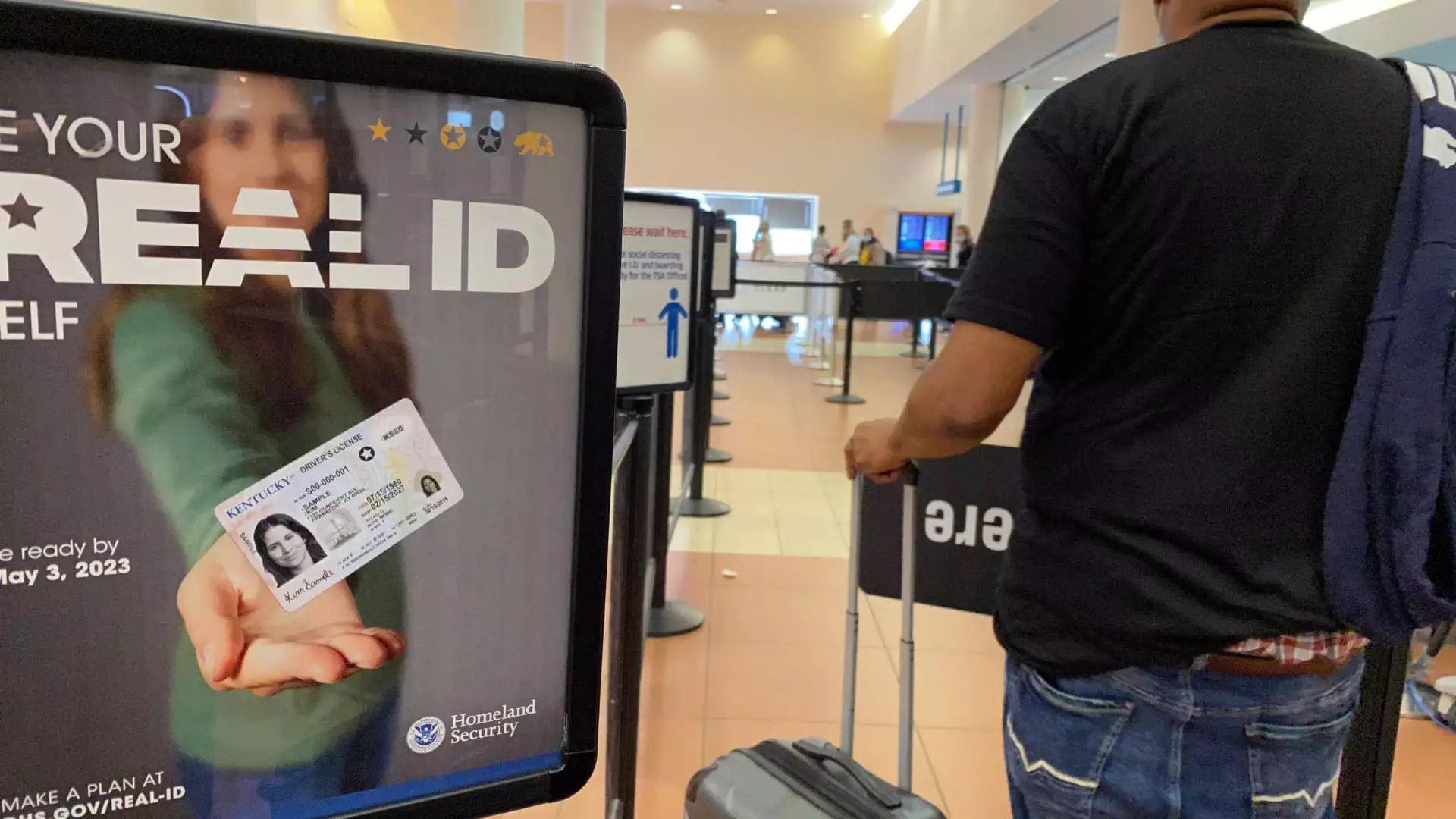As travelers prepare for their routines, the looming arrival of May 7—the day the Real ID regulations go live—tends to evoke a mixture of anxiety and frustration. The federal government has put its foot down, emphasizing that only travelers with Real ID-compliant identification will make it past airport security for domestic flights. With 81% of fliers reportedly already compliant, one might assume the country is all set for this transition. However, the stark reality is that many individuals are unprepared and face a gauntlet of obstacles in obtaining compliant IDs. The urgency and scarcity of appointments at motor vehicle departments reflect a glaring oversight that could potentially derail countless travel plans.
Federal Overreach or Rational Security Measure?
The debate around the Real ID Act spans years of contentious political discourse. Initiated as a response to the horrifying acts of terrorism on September 11, 2001, its aim is to fortify national security. Supporters tout the importance of identity verification as quintessential for our safety. Yet, critics argue that the Act represents an overreach of federal authority, enforcing a uniformity that dismisses the varied realities of citizens across states. In an era where individual freedoms should be nurtured and respected, why must one’s ability to travel hinge upon a standardized form of identification? The Real ID seems to be a one-size-fits-all approach that may not actually fit all.
Limited Availability Breeds Frustration
Travelers are now scrambling to comply, and the disarray surrounding appointment availability at state motor vehicle departments speaks volumes about the government’s readiness to enforce these regulations. Long wait times or the unavailability of appointments creates a logistical nightmare for many, particularly those who live in rural areas or lack flexible working hours. John Essig of the Transportation Security Administration (TSA) asks citizens to act swiftly, yet where is the proactive support from federal and state bureaucracies to ensure accessibility? The push for compliance has been visible in airports, where TSA officials distribute flyers, but the resources clearly aren’t matching the urgency of the situation.
The Reality of Inequities
In terms of accessibility, not all citizens are on even ground. The Real ID requirements inadvertently create barriers for marginalized communities—especially low-income individuals, the elderly, and the disabled—who may find it harder to navigate the bureaucratic labyrinth needed to secure a compliant ID. While the TSA emphasizes that travelers can use various alternative forms of identification—like passports or Global Entry cards—these options presume a level of privilege and access that not everyone has. Some individuals may not have the financial resources or time to procure these IDs, making air travel a privilege reserved for the fortunate.
Challenged Freedom in the Name of Security
As the TSA gears up to enforce Real ID requirements, the struggle against additional screening measures feels omnipresent. While the agency insists these steps are necessary for safety, travelers may experience delays and intrusive scrutiny, effectively transforming air travel into an endurance test. In an age where efficiency and convenience are paramount, this clunky system threatens to frustrate a whole generation of travelers. With the TSA recommending early arrivals—up to three hours for those without the proper ID—it becomes evident that flying is becoming less about the joy of travel and more about navigating a gauntlet of regulations.
Advocacy for True Alternatives
In the midst of frustrations over Real ID, we cannot disregard the brilliance of alternatives that might better serve our advancement toward safety. Enhanced IDs, which also adhere to Real ID guidelines yet enable border-crossing ease, are an excellent choice for some. However, universalizing this measure would require considerable planning to avoid the pitfalls currently caused by ID scarcity. Instead of merely enforcing compliance, why not advocate for systemic changes that include innovative, tech-efficient ways of identification that cater to the diversity of our population? After all, in creating barriers in the name of security, we risk losing sight of the freedom that makes travel a cherished human experience.

